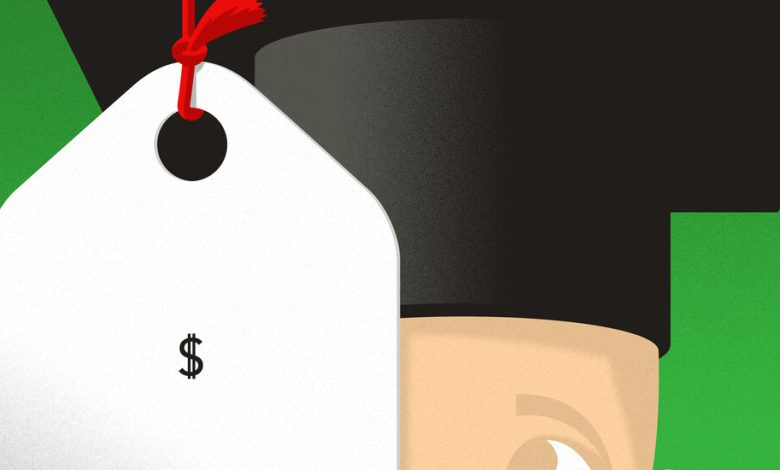That Giant College ‘Sticker’ Price Isn’t What Most Students Pay

Families with college-bound students may well have shuddered when they heard that the official, full cost of a year at some four-year private schools will soon hit six figures.
But outrage over mushrooming college “sticker” prices clouds a reality that some families may not fully understand: Few students pay the full price. That’s because colleges give financial aid to income-eligible students and merit aid — in the form of scholarships or tuition discounts — to more affluent families that may be able to pay the full price but may balk at doing so.
On average, private nonprofit colleges cut tuition by more than half for first-time undergraduates, according to a recent report from the National Association of College and University Business Officers.
That means college sticker prices — the full “cost of attendance” that the federal government requires colleges to publish — are an increasingly unreliable indicator of what a family will pay, according to a report titled, in part, “Ignore the Sticker Price,” and published Friday by the Brookings Institution, a Washington think tank. That goes for both low- and middle-income families, as well as for higher-income families that don’t qualify for need-based aid.
“Our current system of setting and communicating college prices simply does not work,” wrote the author of the report, Phillip Levine, an economics professor at Wellesley College and a nonresident senior fellow at Brookings. He analyzed federal data to track changes in college pricing for students at different income levels.
“We cannot expect students to make sound decisions regarding educational investments if they do not understand how much college will actually cost them,” he added.



